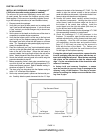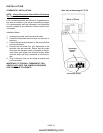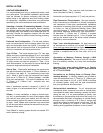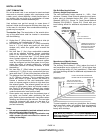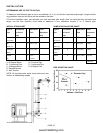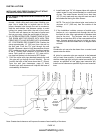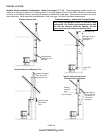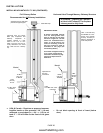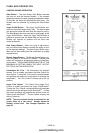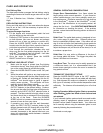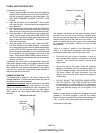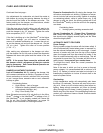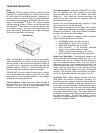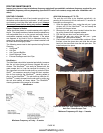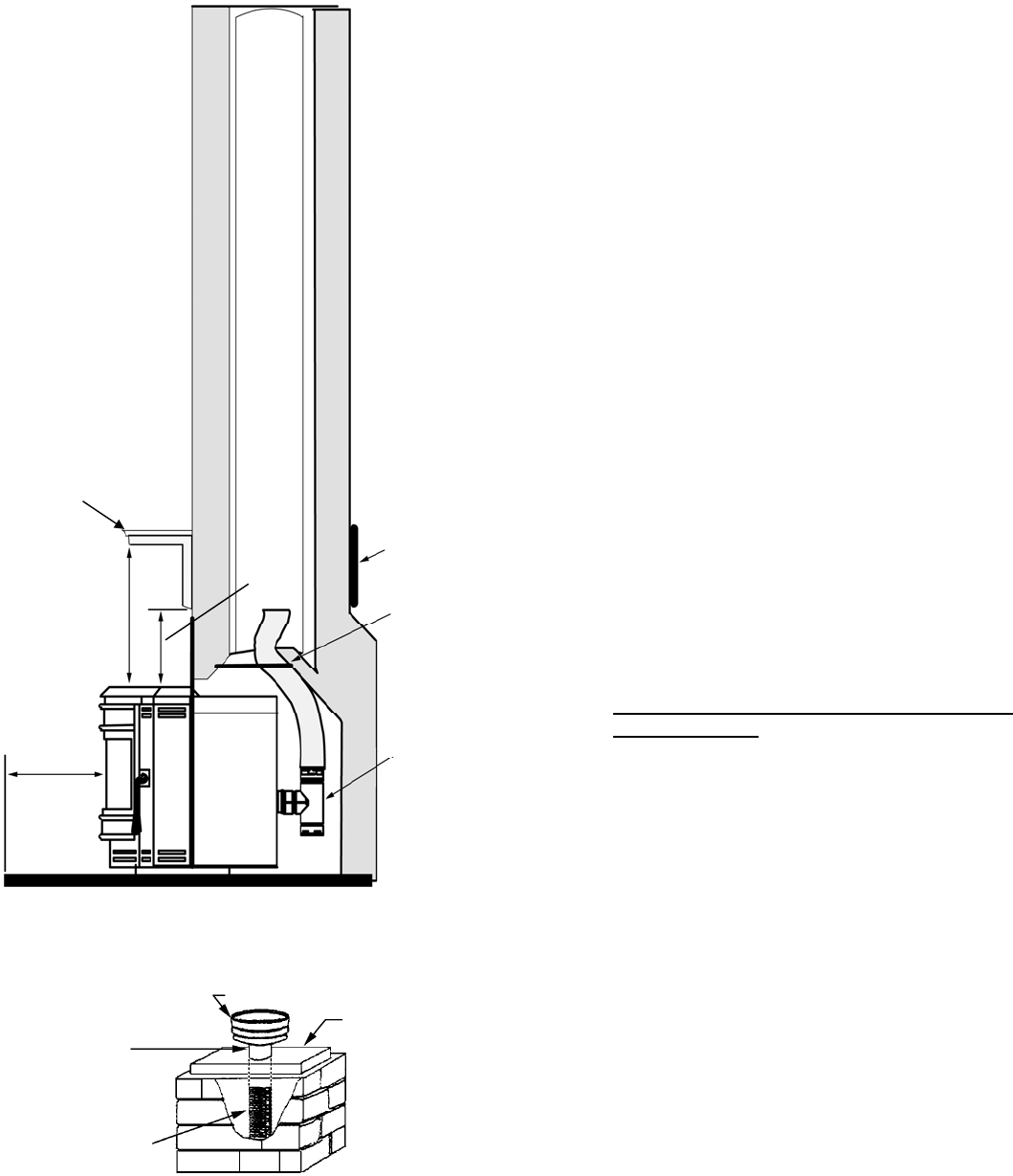
INSTALLATION - ADVANTAGE II-T C INS
IMPORTANT- Make sure the chimney and firebox are clean and free of soot and ashes before installation begins. Fail-
ure to do so may result in the transfer of soot into the room by way of the Room Air Blower.
PAGE 19
Positive Flue Connection without a Full Reline
(not allowed in Canada)
VENT TERMINATION WHEN LINER IS USED.
A section of pellet vent pipe (listed to UL 641 or ULC S609) is required
at the top where exposed to the elements (see illustration below).
This pellet insert may be installed into a ma-
sonry fireplace (built to UBC 37 or ULC S628
standards) or a factory built fireplace (built to
UL 127 or ULC S610 standards) as illus-
trated on this page. When installing into a
masonry chimney, it is recommended that
the exhaust vent be extended to the top of
the chimney as shown on the following page.
However, if the vent pipe does not extend to
the top of the chimney, the vent must extend
a minimum of 18” above the damper. You
must seal the damper area so that the air /
exhaust in the chimney cannot communicate
with the air in the fireplace firebox (this is a
positive flue connection. See the following
instructions for one method of sealing flue).
(USA & Canada) Direct Connection / Posi-
tive Flue Connection
In Canada, this appliance requires a full re-
line when installing into a masonry fireplace.
In the USA, as a minimum the vent connec-
tor from the insert flue outlet must extend a
minimum of 18” above the damper and the
damper area must be sealed to prevent dilu-
tion air from entering the chimney which will
affect proper drafting of appliance.
See the following instructions for acceptable
methods for sealing chimney throat.
Approved Methods of Achieving a Positive
Flue Connection - A qualified installer should
evaluate the existing fireplace to determine
the best method for achieving a positive flue
connection between the vent pipe or liner
and the chimney. The most common method
for achieving a positive flue connection in
masonry fireplaces is to secure a seal-off
plate (i.e. 22-gage sheet steel) in the fire-
place throat using masonry screws. Other
acceptable methods include packing non-
combustible material (i.e. rockwool) around
the vent pipe or using a flue adapter. What-
ever “seal off” method is used must effec-
tively seal the area to prevent room air pas-
sage to the chimney cavity of the fireplace.
The vent pipe must
extend a minimum o
f
18” above the damper.
The existing chimne
y
must not be corroded o
r
damaged in any way.
18” Min.
(457 mm) to
Mantel
1” Min.
(25 mm)
to Trim
♦ 6” Min.
Floor
Protection
A
non-combustible seal is
required at the dampe
r
area (to prevent dilu-
tion/air from entering the
chimney. See Positive
Flue Connection on this
page.
Optional Clean Out Access
Door
Clean Out
Tee
Mantel
Pellet Vent Cap - Listed to
UL 641 & ULC S609
1' Section of PL
Vent - Listed to
UL 641 &
ULC S609
3" or 4" liner (listed to
UL 1777 or ULC S635
)
Chase Cover
Positive Flue Connec-
tion into a Masonr
y
Fireplace without a Full
Reline – Advantage II-
T
C INS
The Advantage II-T C
INS does not require a
full reline (in USA only)
when installing into a
masonry fireplace, how-
ever, it is recommended
to ensure proper drafting
of the appliance. The
vent connector from the
insert must extend a
minimum of 18” above
the damper and the
damper area must be
sealed to prevent dilution
air from entering the
chimney which will affec
t
proper drafting of appli-
ance
(USA Only) Venting Into an Existing Chimney
www.PelletKing.com



